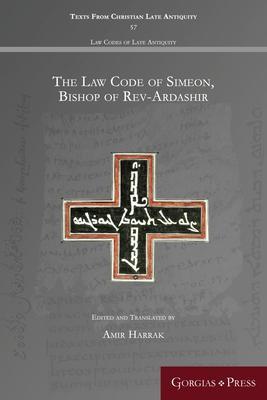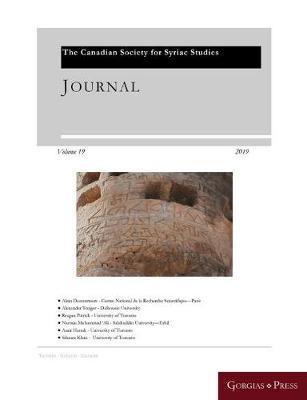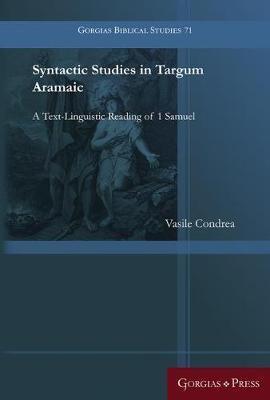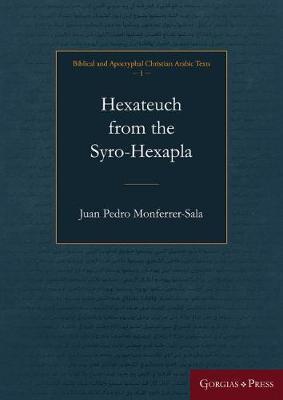
5 minute read
NUMISMATICS: COINS & MEDALS
Homily on the Consecration of Myron By Baby Varghese A metrical homily of one of the last scholarly Syrian Orthodox bishops of the early Islamic period.
George was one of the last scholarly Syrian Orthodox bishops to live in the early Islamic period. His metrical homily, probably composed to be sung during the consecration of the Myron, is presented here with the vocalised Syriac text and English translation on facing pages.
Advertisement
Gorgias Press • 9781463207311 • Paperback 229 x 152mm • 200 pages • December 2020 • £36.00
The Law Code of Simeon, Bishop of Rev-Ardashir
Edited by Amir Harrak Series: Texts from Christian Late Antiquity A translation of The Law Code of Simeon of Rev-Ardashir.
The Law Code of Simeon of Rev-Ardashir, originally written in Persian, was
translated into Syriac by a monk of B ēṭ-Qatrāyē. The Code's author, possibly to be identified with a rebellious metropolitan mentioned in the letters of Patriarch Īšoʿ-yahb III, aims to clarify theoretical scriptural law, and to address specific cases of inheritance law.
Gorgias Press • 9781463241346 • Paperback 229 x 152mm • 104 pages • Available Now • £30.00
Edited by Amir Harrak A refereed journal published annually by the Canadian Society for Syriac Studies.

JCSSS focuses on the vast Syriac literature, which is rooted in the same soil from which the ancient Mesopotamian and biblical literatures sprung; on Syriac art that bears Near Eastern characteristics as well as Byzantine and Islamic influences; and on archaeology, unearthing in the Middle East and the rest of Asia and China the history of the Syriac-speaking people: Assyrians, Chaldeans, Maronites and Catholic and Orthodox Syriacs.
Palestinian Hagiography in the Sixth Century A.D. By Rod Stearn Series: Gorgias Studies in Classical and Late Antiquity Sets Judean hagiographies in wider socio-economic contexts.
Judean hagiographies are unusual. Some surprise in their structure, resembling historical chronicles more than 'traditional' hagiographies. Others offer unexpected content, running counter to the stylisations of their time. The peculiarities of these works have often been examined on literary and theological grounds, but this work explores the unmined implications of their socio-economic context. The local and imperial connections of the saints, the networks they constructed, and the institutional realities of the monasteries they founded shine new light on Judean texts.
Gorgias Press • 9781463239817 • Hardback 254 x 152mm • 250 pages • August 2020 • £76.00
Jehoiachin and his Oracle
A Jeremianic Scribal Framework for the End of the Deuteronomistic History By Melvin Sensenig Series: Perspectives on Hebrew Scriptures and its Contexts Examines the conflict surrounding King Jehoiachin following a drastic oracle from Jeremiah.
King Jehoiachin, the last Judahite king exiled to Babylon, became the focus of conflicting hopes and fears about a revived Davidic kingship after the exile. As this book demonstrates, this conflict stemmed from a drastic oracle from Jeremiah that seemed to categorically reject Jehoiachin, while the canon records that he not only survived but thrived in exile.
Gorgias Press • 9781463240431 • Hardback 229 x 152mm • 250 pages • Available Now • £76.00
Syntactic Studies in Targum Aramaic
A Text-Linguistic Reading of 1 Samuel By Vasile Condrea Series: Gorgias Biblical Studies Explores the role of the narrator in Targum 1 Samuel.

How can one distinguish between narrative, which records a sequence of events, and a narrator’s comment on these events, in the form of notes, clarifications, and retellings? This book applies the insights of Functional Sentence Perspective and Text Linguistics to Targum 1 Samuel. Through this analysis, Condrea answers key questions about Aramaic syntax and recovers the voice and contributions of the text’s narrator.
Täwaḥədo Church
Homily on the Consecration of Myron By Baby Varghese Series: Gorgias Eastern Christian Studies

Investigates the formation of the Jewish cultural profile of the Ethiopian Orthodox Täwaḥədo Church.
This monograph traces how ‘Jewish’ elements were introduced into and disseminated throughout the Ethiopian Orthodox Täwaḥədo Church through a series of multi-layered, socio-politico-cultural processes. Drawing on historical and literary evidence, Afework tracks the incorporation of Jewish features into the Ethiopian Orthodox Church from pre-Aksumite Christianity, before the 4th century, through the 16th century.
Gorgias Press • 9781463207175 • Hardback • 229 x 152mm 350 pages • Available Now • £80.00
Through the Prism of Wisdom
Elijah the Prophet as a Bearer of Wisdom in Rabbinic Literature By Hilla N. Alouf-Aboody Series: Judaism in Context Explores the nature of the Elijah traditions in rabbinic literature and their connection to the wisdom tradition.
Elijah the prophet's role in rabbinic literature is a variegated one that encompasses both his role in the messianic era as well as his non-messianic appearances in rabbinic legends. In this work these different roles are explored through the prism of the wisdom tradition. The three stands of wisdom – the Torah-Centered wisdom tradition, the ApocalypticCentered wisdom tradition, and the Spirit-Centered wisdom tradition, serve as a guide in understanding the complex nature of wisdom and its influence on the Elijah legends.
Gorgias Press • 9781463207427 • Hardback 254 x 178mm • 580 pages • August 2020 • £126.00
Hexateuch from the Syro-Hexapla
Edited by Juan Pedro Monferrer-Sala Series: Biblical and Apocryphal Christian Arabic Texts Contains the edition of the Hexateuch preserved in Codex Sinai Arabic 3.

The biblical material translated into Arabic during the Middle Ages included texts from the Hexateuch contained in Codex Sinai Arabic 3, the first in the Christian Arabic Texts series now being published. This set of six texts (Pentateuch + Joshua) is of enormous interest, for what it tells us not only about translating into Arabic, and about the techniques and strategies adopted by the translators, but also about the revisions and reworkings to which the original translations were subjected.







